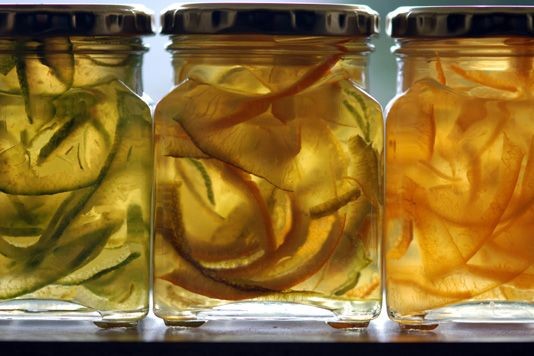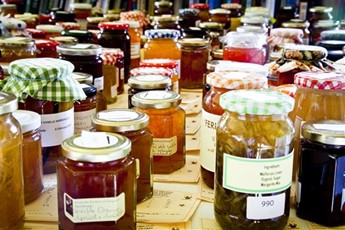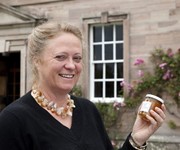The history of marmalade

To celebrate National Marmalade Week, we delve into the history of that most British of preserves.
Marmelo

Marmalade and other types of citrus fruit preserve can be traced all the way back to Greek and Roman times. But it didn’t become popular in Britain until the 17th century, when citrus fruits first began to be plentiful – marmalade-making was a great way of using and preserving these fruits.
The British found that adding chopped orange peel to a mixture of oranges and sugar helped it to set, and since then the world has come to accept marmalade as a British speciality. It’s believed that the best marmalades all come from our shores.
Marmalade was an excellent way of providing vitamins when fresh fruit was not available, and the British used it to help prevent scurvy and other illnesses on board merchant ships.
The marmalade awards
 These quirky awards were founded in 2006 by Jane Hasell-McCosh with the initial idea of preserving, growing and widening the most English of customs: making marmalade. The awards generated a following far beyond Jane’s wildest expectations. In 2013, more than 1,900 jars of marmalade were sent in from countries far and wide including Japan, Australia and the Philippines.
These quirky awards were founded in 2006 by Jane Hasell-McCosh with the initial idea of preserving, growing and widening the most English of customs: making marmalade. The awards generated a following far beyond Jane’s wildest expectations. In 2013, more than 1,900 jars of marmalade were sent in from countries far and wide including Japan, Australia and the Philippines.
The Awards are centred on Dalemain Mansion, a Georgian stately home lived in by the same family for over 300 years, which also happens to hold a very rich archive of marmalade recipes.
To find out more about the Marmalade Awards, which coincide with the beginning of National Marmalade Week (1-8 March), visit marmaladeawards.com.
Jane Hasell-McCosh
 Jane (pictured left) is passionate about the preserve. As a child she helped her mother make marmalade year-round, a tradition she has continued with her own three children.
Jane (pictured left) is passionate about the preserve. As a child she helped her mother make marmalade year-round, a tradition she has continued with her own three children.
Her husband Robert’s family have lived in Dalemain for over 300 years, and the archive boasts a recipe book written by his ancestor Mrs Rainbow. Dating back to the early 18th century, it details wonderful recipes for marmalade containing quinces and oranges. Coincidentally, Mrs Rainbow’s husband was Bishop of Carlisle at the time – a post Jane’s own father has also filled.
Frustrated by an apparent decline in the popularity and standards of marmalade making, Jane decided to hold a small event with friends to celebrate this most British of preserves and, at the same time, raise money for Hospice at Home. This became an annual event, growing in size every year, and is now the largest of its kind in the world.
Dark and Chunky marmalade is Jane’s favourite spread. And her preferred way of eating marmalade? With sausages as a relish, of course.
Are you a marmalade lover? What's your favourite flavour? Let us know in the Comments box below.
You might also like
Peculiar food pairings: sausage and marmalade plait
Comments
Be the first to comment
Do you want to comment on this article? You need to be signed in for this feature